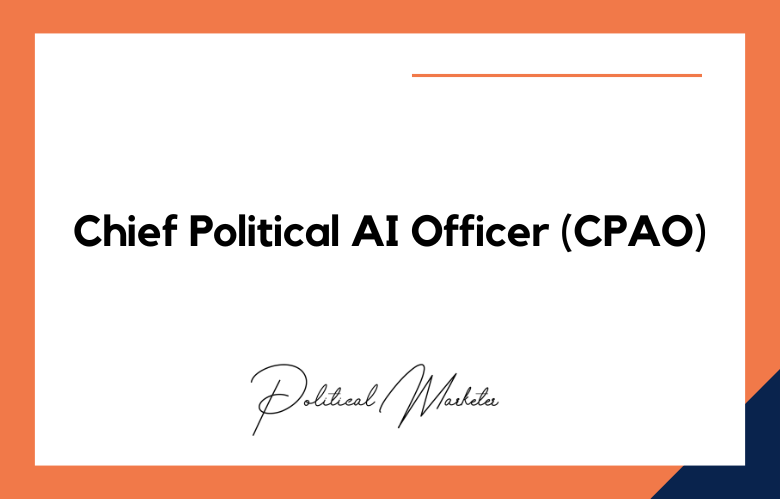Running a perception change political campaign is a strategic endeavor to shift public opinion or alter how the electorate views a political entity, policy, or candidate.
This type of campaign requires a deep understanding of public sentiment, sophisticated messaging, and a multifaceted communication strategy to influence perceptions and attitudes effectively.
How to Run a Perception Change Political Campaign
Comprehensive research is the foundation of a successful perception change campaign. This involves analyzing current public opinions, identifying the aspects of perception that need alteration, and understanding the underlying reasons behind these views. Such research often includes polling, focus groups, and social media sentiment analysis to gather a nuanced understanding of the electorate’s feelings and beliefs.
Once the research phase provides a clear picture of the existing perceptions and the desired outcomes, the next step is to develop a targeted messaging strategy. This strategy should be based on the core messages that resonate with the target audience and counteract existing negative perceptions. Crafting compelling narratives that appeal to emotions, values, and beliefs is crucial, as these are often more influential than facts in changing perceptions.
Effective communication channels are vital in disseminating these messages. A multi-channel approach, utilizing traditional media, social media, grassroots activities, and direct voter engagement, ensures broad reach and engagement with diverse segments of the electorate. Tailoring the message to fit each platform and audience maximizes impact and fosters a deeper connection with the campaign’s narrative.
Engagement and dialogue are also central to changing perceptions. Creating opportunities for direct interaction, such as town halls, Q&A sessions, and community events, allows for personal connections and addresses concerns and misconceptions in real-time.
In summary, running a perception change political campaign involves meticulous research, strategic messaging, diverse communication channels, and active engagement with the electorate. By carefully navigating these elements, a campaign can influence public opinion and achieve its desired perception change.
Winning Hearts, Changing Perceptions: A Guide to Political Campaigns
“Winning Hearts, Changing Perceptions: A Guide to Political Campaigns” would focus on the nuanced art of influencing public opinion and reshaping the narrative surrounding a candidate, policy, or political movement. This guide would delve into successful political campaigns’ strategies for connecting emotionally with voters, counteracting negative stereotypes, and building a compelling, positive image that resonates with the electorate.
Research and Understanding
The guide would start with the importance of thorough research to comprehend the current public sentiment and the underlying factors that shape it. It would emphasize the need to understand the target audience’s values, concerns, and aspirations to tailor messages that resonate on a personal level.
Crafting the Narrative
A significant portion would be dedicated to developing a persuasive narrative. This involves creating a relatable and inspiring story that embodies the campaign’s goals and values, making the political entity seem more human and approachable. Through storytelling, it would discuss highlighting strengths, addressing weaknesses, and neutralizing negative perceptions.
Strategic Communication
The guide would explore a multi-channel approach to communication, combining traditional media, digital platforms, and grassroots initiatives. It would offer insights into creating consistent, compelling content that reinforces the campaign’s narrative and effectively engages different segments of the electorate.
Engagement and Dialogue
Fostering genuine engagement with the community would be another focal point. The guide would provide tactics for organizing events and forums that encourage direct interaction, allowing voters to feel heard and connected to the campaign on a personal level.
Adapting and Responding
Flexibility and adaptability in changing political landscapes and public opinions will be emphasized. The guide would cover strategies for monitoring public sentiment, responding to challenges, and seizing opportunities to reinforce or recalibrate the campaign’s message.
Painting a New Picture: Tactics for a Perception Change Campaign
Embarking on a perception change campaign requires a strategic blend of art and science to reshape the public’s view on a particular issue, candidate, or political entity. This intricate process involves altering surface-level opinions and fundamentally transforming underlying beliefs and attitudes. Here are several pivotal tactics for effectively painting a new picture through a perception
Narrative Crafting: Construct a compelling, cohesive narrative that resonates with your target audience. This narrative should address current perceptions, highlight the disconnects, and offer a positive alternative. Storytelling can be a powerful tool in humanizing issues and making abstract concepts relatable.
Emotional Engagement: Connect with people on an emotional level. Emotions drive behavior more effectively than logic alone. Campaigns should evoke hope, empathy, or even righteous indignation when appropriate to spur the audience into re-evaluating their current perceptions.
Visual Imagery: Leverage visual content to reinforce your narrative. Images, symbols, and videos can convey messages quickly and effectively, often bypassing intellectual barriers to directly impact emotional responses.
Influencer Collaboration: Partner with respected and influential figures who can lend credibility and a broader reach to your campaign. These individuals can be from various fields, such as entertainment, sports, academia, or even respected community leaders.
Grassroots Mobilization: Engage at the grassroots level to foster organic conversations around the campaign’s themes. Encouraging discussions in community groups, social media platforms, and local events can help normalize the new perceptions you aim to establish.
Counter-narrative Strategies: Identify and counteract prevailing negative narratives or misinformation. This can involve fact-checking, myth-busting, and clearly presenting evidence to dismantle existing biases and misconceptions.
Consistency Across Channels: Ensure a unified and consistent message across all communication channels. Mixed messages can create confusion and undermine the campaign’s credibility. Consistency reinforces the new narrative, making it more likely to be internalized by the audience.
Feedback Loops and Adaptation: Implement mechanisms to gauge the campaign’s impact and the public’s response in real time. Use this feedback to adapt and refine strategies, messages, and tactics to better resonate with the audience.
From Resistance to Support: Transforming Perception in Politic
“From Resistance to Support: Transforming Perception in Politics” delves into the strategic process of altering public opinion to foster support for political figures, policies, or parties initially facing opposition or skepticism. This transformation requires a deep understanding of the electorate’s concerns, effective communication, and genuine engagement to shift perceptions from negativity or indifference to positive endorsement.
The journey begins with meticulous research to decode the root causes of resistance. Understanding the electorate’s fears, misconceptions, and expectations is crucial for crafting a responsive and resonant campaign strategy. This research phase gathers qualitative and quantitative data through surveys, focus groups, and social media analysis to construct a detailed picture of public sentiment.
Central to perception transformation is developing a compelling narrative that acknowledges and addresses the concerns of the skeptical audience. This narrative must be authentic and rooted in the community’s values and priorities, presenting a clear, positive vision that contrasts with the current negative perceptions. The guide emphasizes the importance of storytelling, showcasing relatable success stories, and delivering evidence-based outcomes to challenge existing biases and build trust.
Navigating the Political Landscape: Tips for a Perception Change Campaign
Navigating the political landscape to implement a perception change campaign requires a strategic, nuanced approach that acknowledges the complexities of public opinion and the multifaceted nature of political issues. Such campaigns aim to shift public perception, often in an environment that is polarized or resistant to change.
Success in this endeavor requires a deep understanding of the target audience, an effective communication strategy, and the ability to adapt to the ever-evolving political context. Here are vital tips for embarking on a perception change campaign within the political sphere:
Research and Understand Your Audience: Comprehensive research is the foundation of any successful perception change campaign. Understand your target audience’s demographics, values, concerns, and media consumption habits. This insight is crucial for crafting resonating messages and choosing the most effective dissemination channels.
Establish Clear Objectives: Define what success looks like for your campaign. Setting clear, measurable objectives helps you focus your efforts and provides a benchmark for evaluating progress and impact.
Build a Compelling Narrative: Develop a narrative that connects with your audience emotionally. Your story should present facts and articulate a vision that inspires and motivates change. This narrative should be consistent across all platforms and communications.
Engage Through Multiple Channels: Utilize a mix of traditional and digital media to reach your audience where they are most active. Each channel has its strengths and can be used to amplify your message in different ways, from social media campaigns to community events.
Leverage Influencers and Partnerships: Collaborate with individuals and organizations that already have the trust and attention of your target audience. These partnerships can lend credibility to your campaign and extend your reach.
Foster Community Engagement: Create spaces for dialogue and discussion. Engagement shouldn’t be one-way; listening to your audience’s feedback and concerns is vital. This can also help identify and address any misconceptions or objections.
Adapt and Iterate: The political landscape is dynamic; what works today may not work tomorrow. Be prepared to adjust your strategies based on ongoing feedback and changes in the political context.
Address Counter-Narratives: Be aware of opposing viewpoints and narratives. Develop a strategy for addressing them respectfully but firmly, reinforcing your campaign’s key messages.
Highlight Real-life Impacts: People connect with personal stories and tangible outcomes. Highlighting real-life examples of how the desired perception change can impact individuals and communities can make your campaign more relatable and persuasive.
Maintain Transparency and Credibility: Trust is paramount in any perception change campaign. Ensure that your messages are truthful, your data is accurate, and your intentions are clear. Losing credibility can be detrimental to your campaign’s success.
Conclusion:
Running a perception change political campaign is a complex and nuanced undertaking that requires a deep understanding of the electorate, a strategic approach to messaging, and a commitment to authenticity and engagement. The ultimate goal of such campaigns is not merely to alter public opinion superficially but to foster genuine understanding and support by addressing underlying concerns and reshaping narratives.
The success of a perception change campaign hinges on its ability to connect with people on a personal and emotional level. This involves broadcasting messages, listening to the electorate, understanding their fears, hopes, and desires, and reflecting these in the campaign’s narrative. It’s about building a story that resonates, one that acknowledges the past but paints a compelling vision for the future.
Call: +91 9848321284
Email: [email protected]










